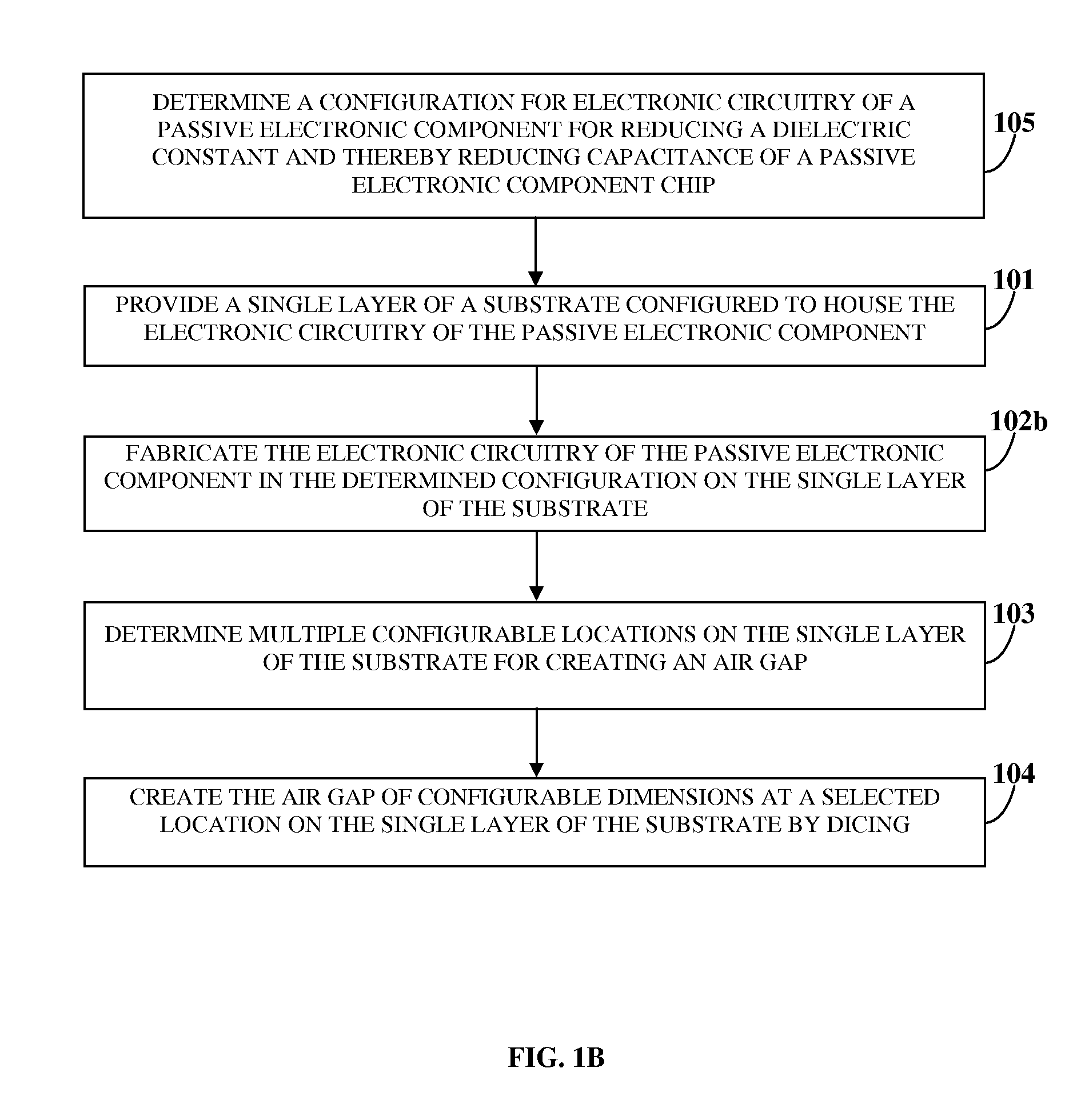Air Gap Creation In Electronic Devices
a technology of electronic devices and air gaps, applied in the direction of waveguides, waveguide type devices, printed element electric connection formation, etc., can solve the problems of limited performance of passive electronic components fabricated on ceramic substrates, increasing the performance of passive electronic components, and meeting continuous technological demands
- Summary
- Abstract
- Description
- Claims
- Application Information
AI Technical Summary
Benefits of technology
Problems solved by technology
Method used
Image
Examples
Embodiment Construction
[0092]FIG. 1A illustrates a method for creating an air gap in a passive electronic component chip configured for high frequency microwave transmission. As used herein, “air gap” refers to a space, or a notch, or a groove containing air or a vacuum in a passive electronic component chip. The method disclosed herein relates to manufacturing high power, high frequency, and wide bandwidth passive electronic component products in a chip form that can operate at 50 gigahertz (GHz) and, in an embodiment, above 50 GHz. For example, the method disclosed herein configures resistors in a chip package. An air gap introduced in a substrate of a resistor reduces capacitance of the resistor, thereby making the resistor suitable for operation at high frequencies. In an embodiment, the passive electronic component chips can be standalone chips comprising, for example, one or more input ports and output ports, leads, connector tabs, etc. In another embodiment, the passive electronic component chips c...
PUM
| Property | Measurement | Unit |
|---|---|---|
| Dissipation factor | aaaaa | aaaaa |
Abstract
Description
Claims
Application Information
 Login to View More
Login to View More - R&D
- Intellectual Property
- Life Sciences
- Materials
- Tech Scout
- Unparalleled Data Quality
- Higher Quality Content
- 60% Fewer Hallucinations
Browse by: Latest US Patents, China's latest patents, Technical Efficacy Thesaurus, Application Domain, Technology Topic, Popular Technical Reports.
© 2025 PatSnap. All rights reserved.Legal|Privacy policy|Modern Slavery Act Transparency Statement|Sitemap|About US| Contact US: help@patsnap.com



